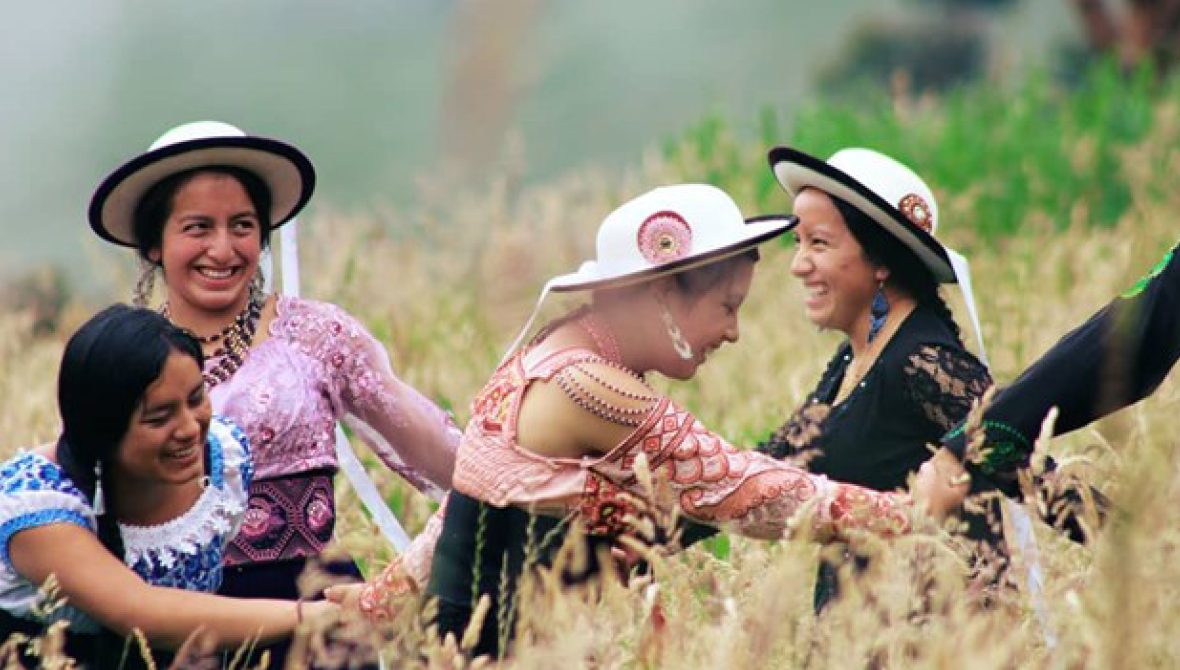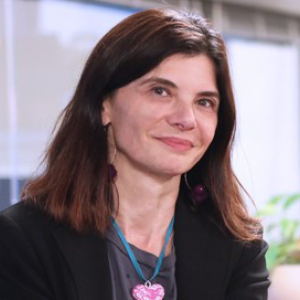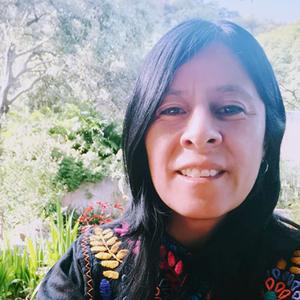Indigenous and Afro-descendent Ancestral Practices and Community Philanthropy in the Americas


For centuries, communities in Latin America and the Caribbean have been practicing reciprocal assistance. Strengthening mutual trust, pooling assets, and building capacity helps people adapt to changing conditions and opportunities, and forms the basis for a growing global practice called community philanthropy that seeks to achieve lasting results that matter to communities, local civil society organizations, and donors.
Indigenous and Afro-descendant communities have evolving, vibrant practices of mutual community support passed down through generations, from tequio or faena in Mexico to minga/minka in Ecuador, Peru, and parts of Colombia. Acknowledging and accounting for the in-kind resources (volunteer hours among others) that grassroots organizations bring to an initiative can generate dividends for communities. As shown in the following examples, drawn from my work with grantees of a federal foreign assistance agency called the Inter-American Foundation (IAF), nonprofit organizations often tap into those traditions and their local assets to make lives better for community members.
Kombit refers in Haitian Creole to communal labor. The Haitian tradition contributes to a spirit of community and unity through shared achievement. In a visit by IAF staff to potential grantees, we saw this in action. The leaders of Association des Femmes pour l’Avancement de Deschamps (OSAFAD), an applicant organization, explained that they had to leave the meeting early because they were organizing a Kombit Lesiv Lanmò to wash laundry together by the river for a member of the association who had recently lost a relative.
As Dieusibon Pierre-Merite, IAF’s Haiti liaison, observed, “This activity strengthens cohesion between group members and also the pride of being a member of this association and community, and can often help another person in adversity.” OSAFAD also pooled community funds to purchase ingredients so another group could prepare food for the family. Kombit highlights the importance of solidarity in pulling communities together during emergencies or tragic times.
Tequio brings Indigenous Mexican communities together to carry out a job, like the tradition of barn-raising in rural America. Everyone is expected to participate in maintaining their roads and highways, building infrastructure projects like small dams, or picking up garbage in the park after a town celebration. Teresa Morales, an anthropologist for IAF grantee Unión de Museos Comunitarios de Oaxaca, explains, “It’s the principle of reciprocity, of sharing your own efforts in exchange for a neighbor’s.”
When earthquakes made roads around Oaxaca impassable in 2017, communities looked out not only for themselves but for other communities nearby. As Luis Ruiz, director of IAF grantee Fundación Comunitaria Oaxaca, recalls, communities without machinery used tequio to clear impacted roads: “You’d find residents from communities further north cleaning up the [blocked] roads in the south.”

In the self-governing municipalities of southern Mexico, women are increasingly leading the practice of tequio. In Oaxacan communities like Teotitlan del Valle, famous for its weavings, women have started to assume new leadership roles. Sofia Gutiérrez, 72, was the first woman to oversee all common land, including forests and waterways, holding people accountable to their duties to participate in tequio. Her daughter, Pastora Gutierrez Reyes, is the head of Vida Nueva, a cooperative of women weavers with more than 25 years of business experience funded partly by the IAF. Pastora draws inspiration from her mother’s leadership, which demonstrates that “in addition to tremendous commitment, [women] have the capacity and increasingly the formal training needed to assume volunteer leadership positions.”
The word minga or minka means “asking for help by promising something” in the Quechua language. People have been using minga to bring together community members to harvest crops or build roads and buildings since before the Incan empire ruled the Andes Mountains (modern-day Peru, Ecuador, and Colombia).
For Elizabeth Carrión of IAF grantee Red de Turismo Comunitario del Austro Pakariñan (Pakariñan) in Ecuador, minga is more than just an activity. Minga is an institution that solidifies a community’s governance and cultural norms. Carrión shares, “It’s not just work. People enjoy sharing with each other and having fun.” In Ecuador, young people participate in minga from an early age among Indigenous communities, joining monthly committees assigned to agriculture, animal care, tourism, or water management.
“In Ecuador, young people participate in minga from an early age among Indigenous communities, joining monthly committees assigned to agriculture, animal care, tourism, or water management.”
Pakariñan works with local community organizations and schools to expand social and leadership opportunities for women and girls. Carrión explains that they connect training with minga: “We introduced ‘reciprocal training,’ which means that after a cohort of trainees attend a workshop, they then replicate the concepts of the workshop with other women in their own communities.”
Donors, domestic and international, are beginning to recognize these ancestral practices as part of the community’s co-investment. Grassroots organizations know that capitalizing on these ancestral practices, rather than changing them, helps them articulate better to others that these traditions are essential for their initiatives to be effective in the long run. Community members are ready to invest extra hours of their own time or offer their land to showcase more sustainable agricultural practices, for instance, for others to adopt adequately.
For millennia, traditional customs, such as tequio in Mexico and minga in the Andes, have brought together members of the community to harvest crops or build buildings. Donors understand that accounting for peoples’ trust and local capacity built over time and their ability to mobilize local resources for a common purpose shows a level of cohesion and pride that can influence the quality of life of those living in resource-poor communities. Recognizing these assets can also alter power relations and raise expectations for self-reliance. It holds out the promise that an initiative launched through more formal philanthropy will continue to exist into the future because it may become embedded within community practice.
“Comunalia launched the fund Active Communities, in which the $4.8 million activated by community foundations helped to mobilize $7.34 million in in-kind contributions from communities. Much of this value was contributed via volunteer hours associated with ancestral practices.”
Funders in Mexico, such as Comunalia, the network of community foundations in Mexico, use this strategy to also make development processes more inclusive and to convey the message that all community residents and institutions can be philanthropists. During the COVID-19 pandemic, Comunalia launched the fund Active Communities, in which the $4.8 million activated by community foundations helped to mobilize $7.34 million in in-kind contributions from communities. Much of this value was contributed via volunteer hours associated with ancestral practices.
Jennifer Arias from Fundación Comunidad in the southern state of Morelos summarized her observations to the IAF in Spanish. A simple translation of her comment reads: “To make visible the contribution of grassroots organizations, Fundacion Comunidad strives to monetize those contributions to visualize for communities — but also for others — how we leverage local resources. This is only possible with strong social capital ties among residents, ties that foster trust and mutual help efforts. It allows us to have a horizontal relationship with grassroots organizations and assert the autonomy of community organizations.”
These age-old traditions make it clear that people are giving at the local level and supporting community development in Latin America and the Caribbean. This mutual support makes communities resilient in times of crisis. As Morales summarizes, “The only way to have health, prosperity, and even spiritual well-being is to participate and to reaffirm one’s willingness to be part of a collective fabric that acts in unity.”
Grassroots organizations throughout the region have tapped into these community philanthropic traditions for decades and value these various expressions as development tools. Many international donors, including the IAF, are following the lead of these grassroots organizations where people are giving, sharing, and helping every day.
At the IAF, we have learned that valuing these existing tangible and intangible community assets — such as solidarity — reenergizes local forms of giving like minga, tequio, or kombit. As one of our grantee partners based in Oaxaca noted, “Valuing these deep rooted practices can become a virtuous cycle.” It rewards the community for working collectively and trusting each other, creating an incentive to keep these practices going when they see tangible results. These community-generated acts and everything they achieve also responds to the common myth in the development community that only wealthy donors can undertake philanthropic efforts. Community philanthropy initiatives show that these practices can mobilize, attract, and allocate the mega-dollar resource requirements for the needed investments.
Photo Credits
Feature photo: Red de Turismo Comunitario del Austro Pakariñan
Youth mural photo: Fundacion Comunitaria Oaxaca

